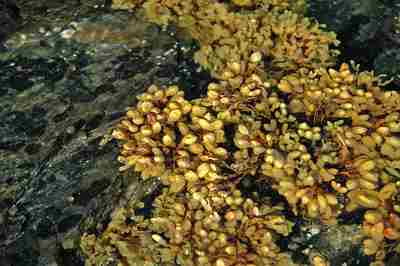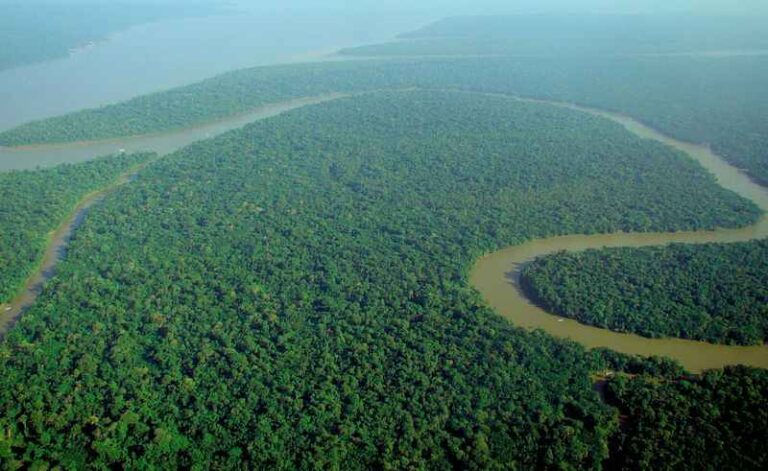5 Effects of Plastic Pollution on Environment
Effects of plastic pollution on environment include; oxygen deficiency, low water quality, leachate production, low soil fertility, and airborne toxin release.
This article discusses the effects of plastic pollution on the environment, as outlined below;
-Effects of Plastic Pollution on Water Bodies
-Effects of Plastic Pollution on Land
-Effects of Plastic Pollution on Air
-Effects of Plastic Pollution on Water Bodies
1). Oxygen Deficiency (as one of the Effects of Plastic Pollution on Environment)
Plastic pollution can reduce the amount of oxygen in water bodies by affecting the biotic and abiotic components of the ecosystem that are responsible for oxygen production.
When plastics accumulate in water bodies, they may reduce ecologic productivity by releasing chemical compounds that inhibit the growth of plants and microorganisms [2].
Since these organisms produce oxygen, their inhibition causes oxygen deficiency, which in turn reduces water quality and productivity.
Other physicochemical factors like temperature and pH can be affected negatively by plastic pollution.
2). Low Water Quality
The presence of millions of tons of plastic materials in water bodies, ultimately results in low water quality.
This is caused by the disruption of physicochemical and biological equilibrium in water by these plastics, or by the direct effect of toxins released from plastics.
Release of toxins is less common with biodegradable plastics which are sustainable products made mostly from biomass. Synthetic plastics, on the other hand, are made from organic and inorganic compounds like bisphenol A, that can be toxic when released into the environment as the plastic slowly disintegrates [3].
Toxins from plastics mostly infiltrate surface water bodies like rivers and seas, although they may also infiltrate and contaminate groundwater reserves.
Aside reducing the quality of water in these aquatic systems, plastic pollution can facilitate other forms of environmental degradation like flooding, soil erosion, and stormwater pollution. It can also cause the degradation or impairment of infrastructure like water dams and drainage systems.

-Effects of Plastic Pollution on Land
3). Leachate Production (as one of the Effects of Plastic Pollution on Environment)
‘Leachate’ is the term used to describe chemical materials that are produced from waste, and which may infiltrate the soil through leaching.
The production of leachate usually has negative environmental impacts because leachate itself is often composed of potentially toxic materials [4].
Within the context of plastic pollution, leachate production becomes a problem when plastic waste is allowed to accumulate in very large quantities. Slow biodegradation and disintegration of such plastic waste may release toxic byproducts which could infiltrate the soil as leachate.
Leachate production is one of the most significant effects of plastic pollution on the environment, because it can affect more than one medium simultaneously. After infiltrating and degrading soil, leachate from plastic waste can migrate further into underground aquifers, thereby causing groundwater pollution as well.
Leachate from plastic waste can also migrate from the soil as near-surface runoff, into surface water bodies.
4). Low Soil Fertility
Plastic makes soil infertile by altering the physicochemical, geomechanical and ecologic characteristics of the soil.
These changes are most likely to occur in case of acute plastic pollution, where extremely-large quantities of plastic materials are released into the soil ecosystem.
The production of toxic, biodegradation-byproducts by plastic waste can affect the soil, leading to a shift in biochemical equilibrium, which could reflect in the form of pH imbalance, or negative changes in the size and effectiveness of soil microbial populations [7].
Plastic pollution can also reduce soil fertility by causing compaction of the soil, and corresponding decrease in oxygen concentration, porosity, and productivity.

-Effects of Plastic Pollution on Air
5). Airborne Toxin Release (as one of the Effects of Plastic Pollution on Environment)
Plastic pollution is linked to processes and materials that can reduce air quality.
Efforts to manage plastic waste can result in the release of gaseous byproducts, airborne particulate matter, and greenhouse gases, into the atmosphere.
Such efforts include incineration of plastics, which is known to yield toxins like mercury, benzene, dioxins, and vinyl chloride [6].
Others include waste-to-energy practices like pyrolysis.
Air degradation by plastic waste is closely linked to the effects of plastic pollution on human health, like respiratory and hormonal impairment. Inhalation of airborne microplastics is associated with health problems like respiratory illness, cancer, and neurologic defect [1].
These issues can be mitigated through effective recycling.
Conclusion
Effects of plastic pollution on environment are;
1. Oxygen Deficiency
2. Low Water Quality
3. Leachate Production
4. Low Soil Fertility
5. Airborne Toxin Release
References
1). Kannan, K.; Krishnamoorthi, V. (2021). “A Review of Human Exposure to Microplastics and Insights Into Microplastics as Obesogens a section of the journal Frontiers in Endocrinology.” Frontiers in Endocrinology 12. Available at: https://doi.org/10.3389/fendo.2021.724989. (Accessed 6 October 2022).
2). Kumar, R.; Verma, A.; Shome, A.; Sinha, S.; Jha, P. K.; Kumar, P.; Kumar, R.; Shubham; Das, S.; Sharma, P.; Prasad, P. V. (2021). “Impacts of Plastic Pollution on Ecosystem Services, Sustainable Development Goals, and Need to Focus on Circular Economy and Policy Interventions.” Sustainability 13:9963. Available at: https://doi.org/10.3390/su13179963. (Accessed 6 October 2022).
3). Preethi, S.; Sandhya, K.; Esther, L.; Prasad, C. V.; Sreedevi, B.; Chandrasekhar, K.; Jastin P. K. (2014). “Toxicity of Bisphenol a on Humans: A Review.” International Letters of Natural Sciences 27:32-46. Available at: https://doi.org/10.18052/www.scipress.com/ILNS.27.32. (Accessed 6 October 2022).
4). Salam, M.; Nilza, N. (2020). “Hazardous Components of Landfill Leachates and Its Bioremediation.” In M. L. Larramendy, & S. Soloneski (Eds.), Soil Contamination – Threats and Sustainable Solutions. IntechOpen. Available at: https://doi.org/10.5772/intechopen.94890. (Accessed 6 October 2022).
5). Tetu, S. G.; Sarker, I.; Schramever, V.; Pickford, R.; Elbourne, D.; Moore, L. R.; Paulsen, I. T. (2019). “Plastic leachates impair growth and oxygen production in Prochlorococcus, the ocean’s most abundant photosynthetic bacteria.” Communications Biology 2(1). Available at: https://doi.org/10.1038/s42003-019-0410-x. (Accessed 5 October 2022).
6). Verma, R.; Shankarappa, V.; Papireddy, M.; Gowda, A. N. S. (2016). “Toxic Pollutants from Plastic Waste- A Review.” Procedia Environmental Sciences 35:701-708. Available at: https://doi.org/10.1016/j.proenv.2016.07.069. (Accessed 6 October 2022).
7). Zhao, T. (2021). “Microplastics Increase Soil pH and Decrease Microbial Activities as a Function of Microplastic Shape, Polymer Type, and Exposure Time.” Frontiers in Environmental Science 9:1. Available at: https://doi.org/10.3389/fenvs.2021.675803. (Accessed 6 October 2022).





